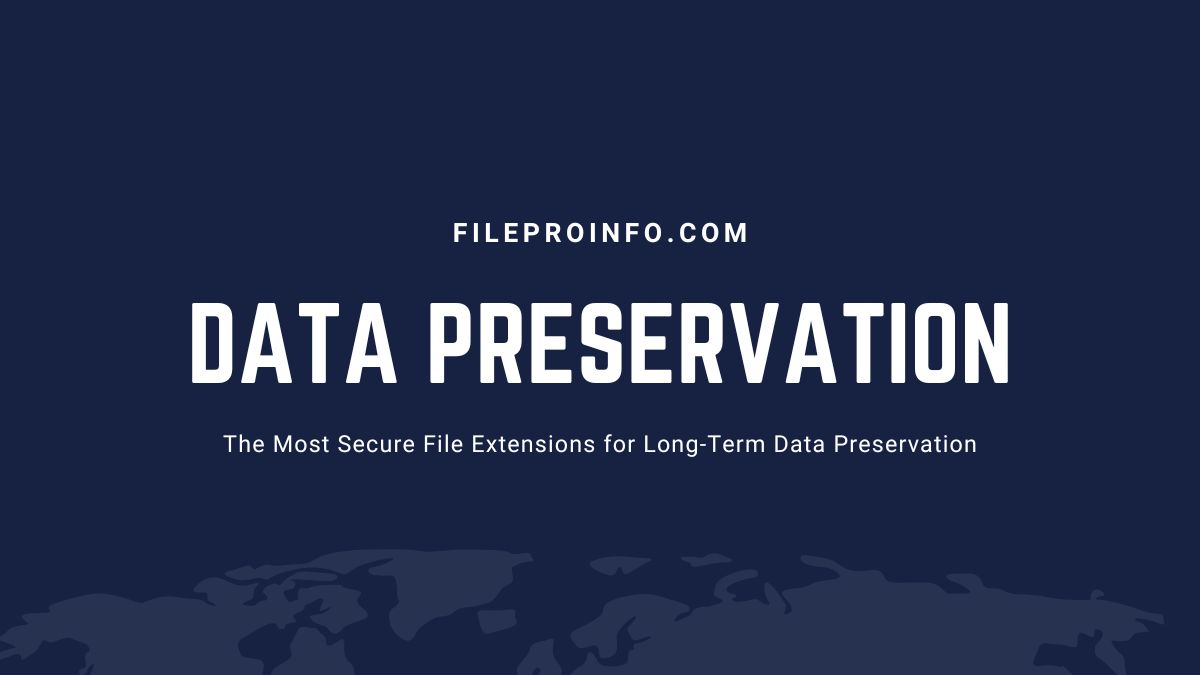
The period is defined by digitalization. Conserving data for the long term has become a major concern. It’s essential for literal records, science, and special libraries. They must maintain the integrity and availability of data for a long time. One critical issue is the choice of file extensions. This choice is a key part of the preservation process. When it comes to life and security, not all file formats have the same level of quality. In this blog post, we’ll look into some of the safest file extensions. They are good for long-term data preservation. We’ll explore their traits and benefits. We’ll also see why they are the best for securing precious data.
1. PDF/A (Portable Document Format Archive):
PDF/A is a dependable and widely accepted training format. This is specifically made for the long-term preservation of electronic documents. Standard PDFs may have dynamic content and interactive parts. PDF/A ensures fixed files. Over time, people can reproduce them. It does this by putting all needed items, like sources and images, in the document. It does this without relying on external sources. Also, PDF/A adheres to strict norms for metadata. It saves vital information about the document, such as authorship and creation date. PDF/A is platform-independent. It is widely accepted and ideal for archiving documents for long-term retention.
2. TIFF (Tagged Image File Format):
TIFF is a robust and flexible image format, making it suitable for a wide range of applications. Its inflexibility and scalability, along with its lossless compression methods, ensure high-quality image preservation. Moreover, TIFF supports various color spaces, bit depths, and metadata, facilitating a comprehensive representation of visual information. With its long history and broad support across different software platforms, TIFF remains a dependable choice for long-term image data preservation. Furthermore, its versatility extends to diverse fields such as digital photography, medical imaging, and archiving.
3. TXT (Plain Text):
While not as glamorous as other file formats, plain textbook files(.txt) offer unequaled simplicity and life for conserving textual information. Unlike personal formats tied to specific software, TXT files are plain, unformatted text. Any text editor or bystander can read them. This universality ensures that TXT files will remain accessible for decades. They may last for centuries. This is true despite technological advancements. Also, simple textbook files are at risk of comity issues and file format fustiness. This makes them a timeless result for storing important documents. It is also good for calligraphies and learning workshops.
4. FLAC (Free Lossless Audio Codec):
FLAC is a secure and effective audio format. It conserves high-quality data without compromising dedication. MP3 and other lossy formats discard audio to reduce file size. In contrast, FLAC uses lossless methods to keep an exact copy of the original audio. This dedication to audio preservation makes FLAC great for saving music collections. It’s also good for sound recordings. It’s also good for other audio meant for long-term storage. FLAC files also support bedded metadata. This allows for complete attestation of audio content. It includes artist, reader, and track data.
5. PDF/X (Portable Document Format Exchange):
PDF/X is a technical subset of the PDF format. It is used to exchange and save print-ready documents. It is used in the graphic arts industry. PDF and X files follow strict norms and specs. They do this to fit professional printing and color workflows. PDF/X files recap all needed info in the document, like sources, color biographies, and image data. They ensure reproducibility and thickness across different printing biases and surroundings. PDF/X’s robustness and adherence to assiduity norms make it a necessary tool. It’s for conserving graphic designs, advertising accouterments, and publications for offspring.
Conclusion:
To preserve data for the long term, you need to choose the right file extensions. They can make all the difference. You should choose secure and dependable formats. This is true for all types of data, like documents, images, audio, or plates. This is key to preserving data over time. The simplicity of plain textbook files has no date. The technical norms of PDF/A and PDF/X each offer unique benefits. They suit specific preservation needs. By using these secure file extensions, we can protect our digital heritage. They will ensure that precious information stays complete for future generations.